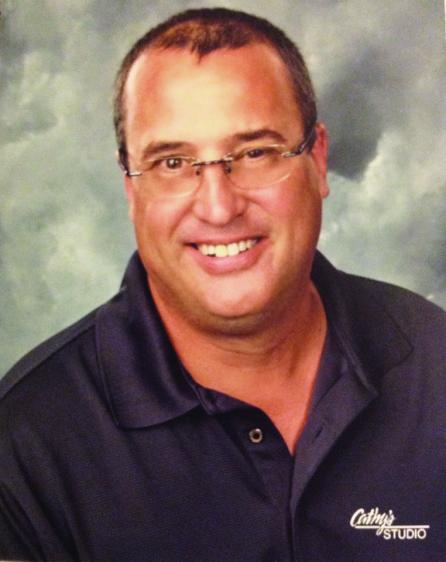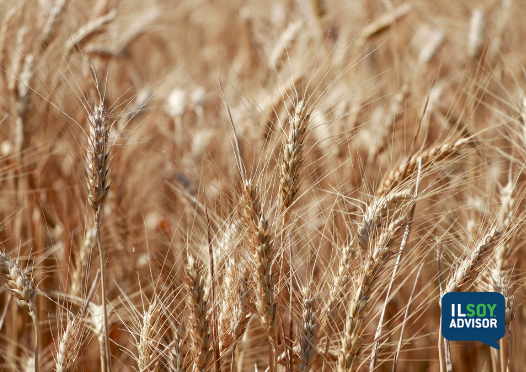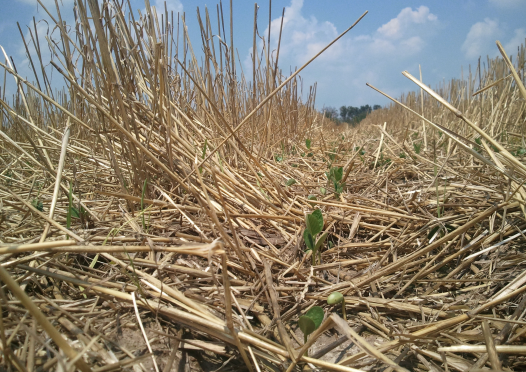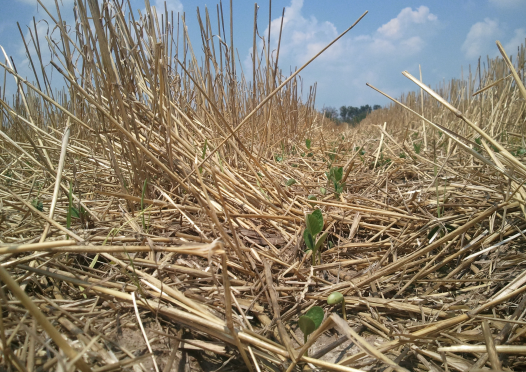ILSOYADVISOR POST
Controlling Volunteer Wheat
Volunteer wheat is probably the number one potential weed problem in double-crop soybeans.
Most often in double-crop soybeans herbicides are needed to control existing weeds prior to or at planting in wheat straw. Often there will be broadleaf weeds or some grasses growing by the time the soybeans are planted. This burndown application frequently is made with a paraquat or glyphosate chemical. However, it only controls the weeds present at the time of application.
Later in the growing season, volunteer wheat can become an issue in double-crop soybeans. This usually occurs due to late-season rains causing wheat seed lost off the head or blown out the back of the combine at harvest to germinate. This wheat seed is usually laying under the straw residue on the soil and not in the soil. Summer rains cause the wheat seed to swell and germinate and the cover of the straw acts as a canopy to allow the seed to grow, keeping the soil moist until the root system is established and the plant can penetrate the soil’s surface.
In normal growing seasons that is not an issue. Most normal post herbicide applications made with glyphosate (Roundup®) or glufosinate (Liberty®) in herbicide-tolerant beans will easily control volunteer wheat. Sufficient rainfall has occurred to germinate wheat seed and the soybean canopy has not covered the young wheat plants, so they will be hit by the herbicide.
However, in dryer conditions or in years where rains come much later, this wheat can grow under the canopy and then present itself at a much later date. In a Roundup soybean system, a second application of glyphosate can control the wheat with no issue. In a LibertyLink® soybean system, a grass herbicide may need to be either added with the glufosinate or sprayed by itself to get good volunteer wheat control.
Always read and follow label directions went tank mixing any herbicides. Additionally, applications of any herbicide made after early July need to also take recropping interval into consideration. Consult and follow the label directions on tank mixing, recropping and harvest intervals.
Kelly Robertson is a Certified Professional Agronomist and a Certified Crop Adviser. He has a Masters of Science (MS) in Plant and Soil Science and has spent 25 years as a soil fertility agronomist and precision agriculture consultant in southern Illinois while also spending 4 years as a Farm/Agronomy Manager and GIS Coordinator for a large farm in southeastern Illinois.





Comments
Add new comment